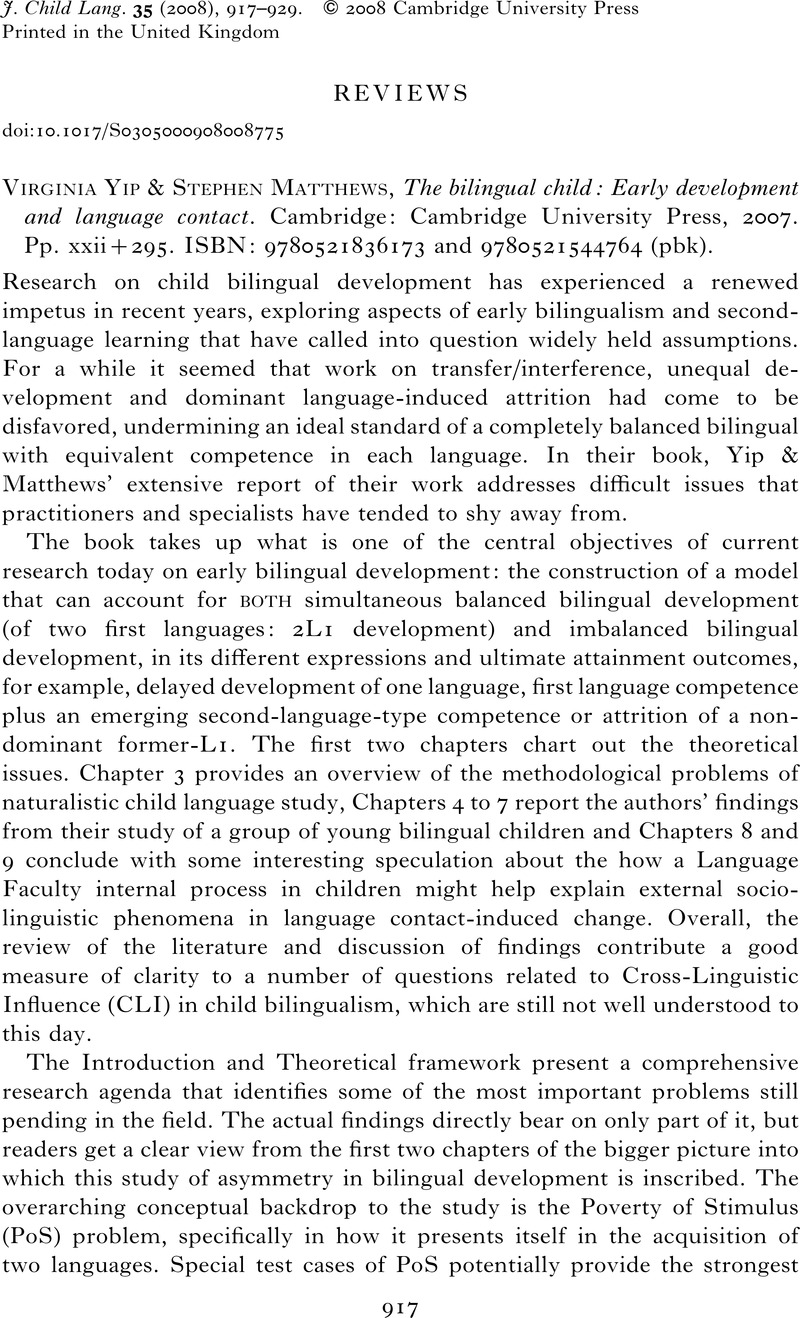No CrossRef data available.
Article contents
Virginia Yip & Stephen Matthews, The bilingual child: Early development and language contact. Cambridge: Cambridge University Press, 2007. Pp. xxii+295. ISBN: 9780521836173 and 9780521544764 (pbk).
Published online by Cambridge University Press: 06 October 2008
Abstract
An abstract is not available for this content so a preview has been provided. Please use the Get access link above for information on how to access this content.

- Type
- Reviews
- Information
- Copyright
- Copyright © 2008 Cambridge University Press
References
REFERENCES
Goldberg, A. (2001). Patient arguments of causative verbs can be omitted: The role of information structure distribution. Language Sciences 23, 503–24.CrossRefGoogle Scholar
Goldin-Meadow, S. (2005). What language creation in the manual modality tells us about the foundations of language. The Linguistic Review 22, 199–225.CrossRefGoogle Scholar
Meisel, J. (2007). The weaker language in early child bilingualism: Acquiring a first language as a second language. Applied Psycholinguistics 28, 495–514.CrossRefGoogle Scholar
Paradis, M. (2004). A neurolinguistic theory of bilingualism. Amsterdam: John Benjamins.CrossRefGoogle Scholar
Senghas, A., Sotaro, K. & Ozyürek, A. (2004). Children creating core properties of language: Evidence from an emerging sign language in Nicaragua. Science 305, 1779–82.CrossRefGoogle ScholarPubMed
Yukawa, E. (1997). L1 Japanese attrition and regaining: Three case studies of two early bilingual children. Tokyo: Kurosio Publishers.Google Scholar


